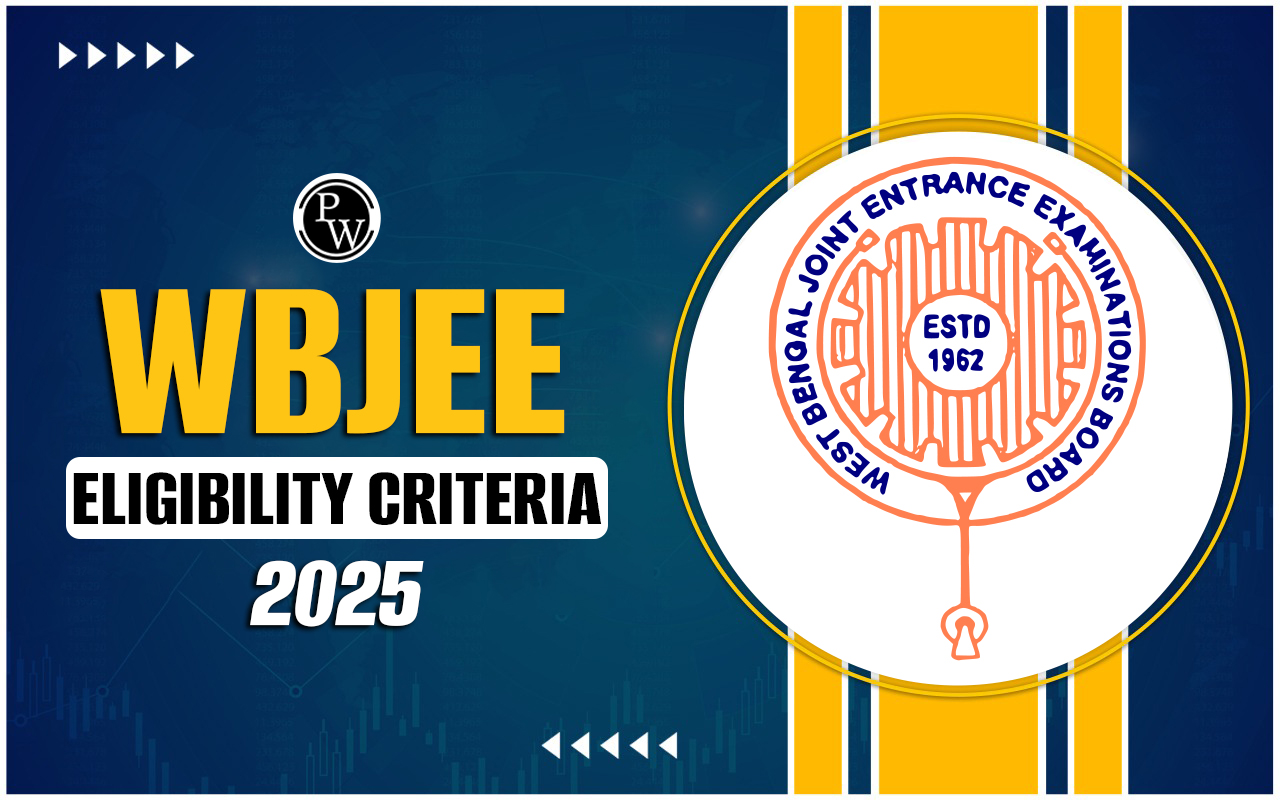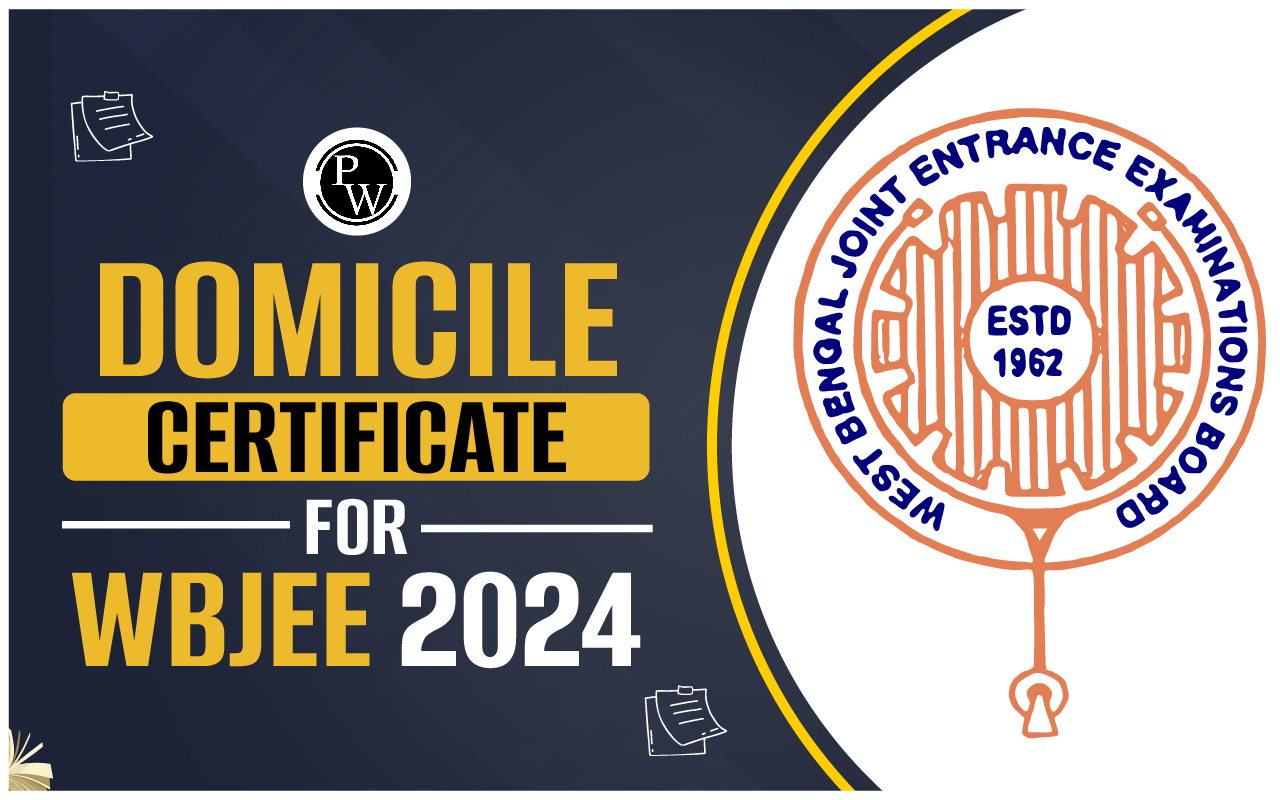

WBCHSE Class 12 Chemistry Syllabus 2025: The West Bengal Council of Higher Secondary Education (WBCHSE) has published the 2025 syllabus for Class 12 on their official website, wbchse.nic.in. This syllabus provides students with a comprehensive guide to effectively prepare for the upcoming secondary exams.
WBCHSE 2025 Class 12 Chemistry Syllabus outlines the subjects and topics that will be covered, reflecting any recent updates to the syllabus and examination pattern. Students can access and download the detailed syllabus and the WBCHSE examination pattern directly from the website to ensure they are well-prepared for scoring high in the exams. The syllabus serves as a valuable resource for planning study schedules and focusing on crucial subject matters.WBCHSE Class 12 Exam 2025 Overview
The Class 12 or HSC exams are managed by the West Bengal HSC Board. Students need to get at least 35 per cent on the WBCHSE exams to pass. The HSC exam is an important milestone in a student's life because the outcomes can have a big impact on their academic future. Here is a brief overview:| WBCHSE Class 12 Exam 2025 Overview | |
| Particulars | Details |
| Full Exam Name | West Bengal Higher Secondary School Certificate Examination |
| Short Exam Name | West Bengal HSC Board 2025 |
| Conducting Body | West Bengal State Board of Secondary and Higher Secondary Education, Pune |
| Frequency of Conduct | Once a year |
| Exam Level | Intermediate |
| Languages | English, Hindi, Marathi |
| Mode of Application | Offline |
| Mode of Exam | Offline |
| Exam Duration | 3 Hours |
West Bengal Class 12 Chemistry Syllabus 2025 Semester Wise
The West Bengal Council of Higher Secondary Education has meticulously organized the Class 12 Chemistry syllabus for the 2025 academic year, dividing it into Semester III and Semester IV. This structure allows students to manage their studies effectively, focusing on specific themes and topics in each semester. The syllabus is designed to cover essential chemical concepts, principles, and applications, ensuring that students gain a comprehensive understanding of the subject. It is available on the official WBCHSE website, where students and teachers can download it to tailor their study and teaching strategies accordingly. This systematic approach helps in preparing students thoroughly for their final examinations.Class 12 Chemistry Syllabus - Semester III
This semester emphasizes the study of states of matter, chemical elements, and their interactions. It includes practical applications and theoretical understanding, preparing students for advanced topics.| Class 12 Chemistry Syllabus - Semester III | |||
|---|---|---|---|
| Unit No. | Topics | Contact Hours | Marks |
| Unit 1 | Liquid State: Introduction, solubility of gases in liquids, solid solutions, vapor pressure and Raoult’s law. Colligative properties; relative lowering of vapor pressure, elevation of boiling point, depression of freezing point, osmotic pressure. Determination of molecular mass using colligative properties. Abnormal molecular mass, van’t Hoff factor and calculations involving it. Colloidal solution, the difference between true solutions, colloids and suspensions; lyophilic, lyophobic, multi-molecular colloids; properties of colloids; Tyndall effect, Brownian movement, electrophoresis, coagulation, emulsions and types of emulsions. | 16 | 08 |
| Unit 2 |
p-Block Elements (Groups 15, 16, 17 and 18):
Group 15 elements : general introduction, electronic configuration, occurrence, oxidation states, Structure and reaction of NH3, HNO3, NCl3; oxides of nitrogen (structure only). Phosphorus – allotropic forms (White and Red), preparation and properties of phosphine, phosphorus halides (PCl3, PCl5) and oxoacids (elementary idea only). Group 16 elements: General introduction, electronic configuration, occurrence, oxidation states; Oxygen: classification of oxides. Preparation and properties of Ozone. Sulphur: allotropic forms (rhombic and monoclinic). Properties and uses of oxides, oxoacids and peracids of sulphur. Group 17 elements : General introduction, electronic configuration, oxidation states; occurrence; trends in physical and chemical properties; Compounds of halogen; preparation, structure and uses of oxides, oxoacids of halogens; interhalogen compounds. Elementary idea of pseudohalogens and polyhalides. Group 18 elements: General introduction, electronic configuration, occurrence; uses of noble gases. Preparation, structure and chemical reactions of XeO2, XeO3, XeF2, XeF4, XeF6, XeOF2. |
18 | 08 |
| Unit 3 | Haloalkanes and Haloarenes: Haloalkanes: Nomenclature, nature of C-X bond; physical and chemical properties; mechanism of substitution reactions. Stability of carbocations. R/S and D/L configurations. Uses and environmental effects of – dichloromethane, trichloromethane, tetrachloromethane; iodoform; freons. Haloarenes: Nature of C-X bond; substitution reaction (directive influence of halogen for monosubstituted compounds only); stability of carbocations; R/S and D/L configurations. Uses and environmental effects of DDT. | 10 | 05 |
| Unit 4 | Alcohols, Phenols and Ethers: Alcohols: Nomenclature; methods of preparation; physical and chemical properties (primary alcohols only); identification of primary, secondary and tertiary alcohols; mechanism of dehydration; uses of methanol and ethanol. Phenols: Nomenclature; methods of preparation; physical and chemical properties; acidic nature of phenol; electrophilic substitution reaction; uses of phenol. Ethers: Nomenclature; methods of preparation; physical and chemical properties; uses. | 10 | 05 |
| Unit 5 | Biomolecules: Carbohydrates - Classification (aldoses and ketoses), monosaccharides (glucose and fructose), D/L configuration, oligosaccharides (sucrose), polysaccharides (starch, cellulose). Proteins - Elementary idea of α-amino acids; peptide bonds; polypeptides; structure of proteins (primary structure only); denaturation of proteins; enzymes. Nucleic Acids - DNA & RNA (introduction and basic concept). | 08 | 05 |
| Unit 6 | Polymers: Classification (natural and synthetic); methods of polymerization (addition and condensation); copolymerization. Some important polymers like polythene, nylon, polyesters, bakelite, and rubber. Biodegradable and non-biodegradable polymers. | 08 | 04 |
Class 12 Chemistry Syllabus - Semester IV
The fourth semester delves into reaction mechanisms, kinetics, and the properties of complex compounds. It aims to enhance analytical skills and deepen the comprehension of chemical behaviour in various contexts.| Class 12 Chemistry Syllabus - Semester IV | |||
|---|---|---|---|
| Unit No. | Topics | Contact Hours | Marks |
| Unit 1 | Electrochemistry: Redox reactions; conductance in electrolytic solutions; specific and molar conductivity; variation of conductivity with concentration; Kohlrausch’s law; electrolysis and laws of electrolysis (elementary idea); dry cell – electrolytic cells and Galvanic cells; emf of a cell; standard electrode potential; Nernst equation and its application to chemical cells; relation between Gibbs energy change and emf of a cell; fuel cells; Li-ion battery. | 08 | 05 |
| Unit 2 | Chemical Kinetics: Rate of a reaction (average and instantaneous); factors affecting rate - concentration, temperature and catalyst. Order and molecularity of a reaction; rate law and specific rate constant; integrated rate equations for zero and first order reactions only; activation energy; Arrhenius equation. Catalysis - homogeneous and heterogeneous catalysis; enzyme catalysis. | 10 | 07 |
| Unit 3 | d-Block & f-Block Elements: General introduction to transition metals including electronic configuration & characteristics. General trends in properties - ionic radii, ionization enthalpy etc.; preparation & properties K2Cr2O7 & KMnO4. Lanthanoids - Electronic configuration & oxidation states etc.; Actinoids - Electronic configuration & oxidation states etc.; comparison with lanthanoids & uses. | 10 | 06 |
| Unit 4 | Coordination Compounds: Introduction to ligands & classification based on denticity & field intensity etc.; coordination number & magnetic properties etc.; IUPAC nomenclature for mononuclear coordination compounds etc.; Bonding theories including Werner’s theory etc.; importance in qualitative analysis & biological systems etc. | 08 | 05 |
| Unit 5 | Aldehydes & Ketones: Nomenclature & nature of carbonyl group etc.; methods for preparation & physical/chemical properties etc.; mechanism for nucleophilic addition etc.; Carboxylic Acids - Nomenclature & acidic nature etc.; methods for preparation & physical/chemical properties etc. | 10 | 05 |
| Unit 6 | Organic Compounds Containing Nitrogen: Nitro compounds – General methods for preparation & reduction reactions etc.; Amines – Nomenclature & classification etc.; Cyanides & Isocyanides – Nomenclature & structure etc.; Diazonium salts – Preparations & importance in synthetic organic chemistry. | 14 | 07 |
WBCHSE Class 12 Chemistry Syllabus 2025 PDF
The West Bengal State Board of Secondary and Higher Education, which is situated in Pune, creates the syllabus for the West Bengal Class 12 Exam. The West Bengal Class 12th syllabus 2025 was developed after careful examination of the state syllabus and the NCERT syllabus to provide students with the knowledge they need to build their futures.WBCHSE Class 12 Chemistry Syllabus 2025 PDF Download Link
WBCHSE Class 12 Chemistry Syllabus 2025 For Practical Exams
Practical exams are as important as theory exams in any state board exam. The practical exam contains a 25% weightage of the whole exam. Hence we have provided the West Bengal Board Syllabus for Class 12 Chemistry for practical exams in the table below.| WBCHSE Class 12 Chemistry Syllabus 2025 For Practical Exams | |
| Units | Topics (Any one of the following) |
| Chemical Kinetics | (a) Effect of concentration and temperature on the rate of reaction between sodium thiosulphate and hydrochloric acid. (b) Study of the reaction rate of any one of the following: (i) Reaction of iodide ion with hydrogen peroxide at room temperature using different concentrations of iodide ions. (ii) Reaction between potassium iodate, KIO3 and sodium sulphite (Na2SO3) using starch solution as indicator (clock reaction). (c) Acid hydrolysis of ethyl acetate. |
| Thermochemistry | i] Enthalpy of dissolution of copper sulphate or potassium nitrate. ii] Enthalpy of neutralization of strong acid (HCl) and strong base (NaOH). iii] Determination of enthalpy change during interaction (hydrogen bond formation) between acetone and chloroform. iv] Heat of displacement of Cu from CuSO4 by Zn. |
| Electrochemistry | Variation of cell potential in Zn|Zn2+||Cu2+|Cu with change in concentration of electrolytes (CuSO4 or ZnSO4) at room temperature (demonstration). |
| Chromatography (demonstration) | (i) Separation of pigments from extracts of leaves and flowers by paper chromatography and determination of Rf values. (ii) Separation of constituents present in an inorganic mixture containing two cations only (constituents having large differences in Rf values to be provided). |
| Preparation of Inorganic Compounds | (i) Preparation of double salt of ferrous ammonium sulphate or potash alum. (ii) Preparation of potassium ferric oxalate. |
| Preparation of Organic Compounds | (i) p-Nitrocetanilide (ii) Aniline yellow or 2- Napthol aniline dye. (iii) Iodoform (iv) Phthalic or succinic anhydride. (v) Di-benzal acetone |
| Tests for the functional groups present in organic compounds | Unsaturation, alcoholic, phenolic, aldehydic, ketonic, carboxylic and amino (primary) groups. H. Characteristic tests of carbohydrates, fats and proteins in pure samples and their detection in given foodstuffs. |
| Determination of concentration/molarity | Determination of concentration/molarity of KMnO4 solution by titrating it against a standard solution of: (i) Oxalic acid (ii) Ferrous ammonium sulphate (Students will be required to prepare standard solutions by weighing themselves). |
| Qualitative analysis | 1)Determination of two cations from a given mixture of salts. 2) Determination of two anions from a given mixture of salts. |
WBCHSE Class 12 Chemistry Syllabus 2025 Projects
Scientific studies involve doing tests in a lab and gathering data from different sources. The project subjects that you must submit before your chemistry final test are shown in the table below.| WBCHSE Class 12 Chemistry Syllabus 2025 Projects |
| Study of the presence of oxalate ions in guava fruit at different stages of ripening. Study of quantity of casein present in different samples of milk. |
| Preparation of soybean milk and its comparison with natural milk concerning curd formation, the effect of temperature, etc. |
| Study of the effect of potassium bisulphate as a food preservative under various conditions (temperature, concentration, time etc.). |
| Study of digestion of starch by salivary amylase and, the effect of pH and temperature on it. |
| Comparative study of the rate of fermentation of the following materials: wheat flour, gram flour, potato juice, carrot juice, etc. |
| Extraction of essential oils present in Saunf (aniseed), Ajwain (carum), and Illaichi (cardamom). |
| Study of common food adulterants in fat, butter, sugar, turmeric powder, chilli powder and pepper. |
How To Download WBCHSE Class 12 Chemistry Syllabus 2025?
Here are the steps that students need to follow to download WBCHSE class 12 chemistry syllabus 2025- Visit the West Bengal Board's official website.
- From the menu, choose "Subjects and Syllabus."
- The pane labelled "HSC General Subject Codes and Syllabus" ought to appear.
- Pick "Chemistry" as your topic. The class West Bengal Board Syllabus for Class 12 Chemistry for the West Bengal State Board will be displayed on the screen.
- Refer to the part for classes 12 and up by downloading the syllabus to keep it safe.
- consult your friends and lecturers.
WBCHSE Class 12 Chemistry Syllabus 2025 FAQs
Q1. Which chapter in chemistry class 12 is considered the most challenging?
Q2. Is 12th-grade chemistry considered easy or difficult?
Q3. How can I score 95 in 12th-grade chemistry?
Q4. What area of chemistry is considered easier?











